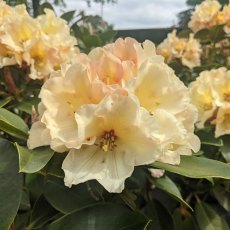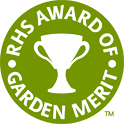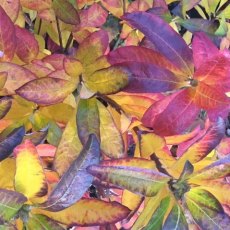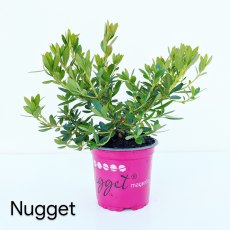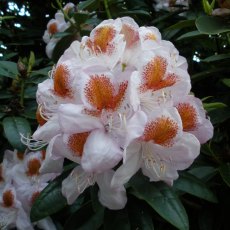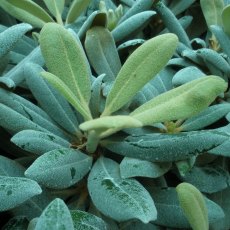Deciduous Azalea Sunny Boy
Item: ASUNB
 In stock
In stock
May
Orange
125-150cm
Not Scented
Yes
To -20 °C
Collect in Store
This item is available for collection.
Home Delivery
UK mainland delivery from £8.95
(H6) Striking deep orange red flowers with paler orange markings on the upper lobe, and darker stripes through the centre of each lobe. The flowers are wide tubular-funnel shaped with a wavy edge, and give a glowing and almost luminescent effect in late May, especially in sunshine. Young leaves are purple bronze in colour, followed by a good red autumn foliage display. A recent introduction from Hachmann, in Northern Germany, where it has proved hardy down to -22C. Height 125-150cm in 10 years.
Registered as 'Hachmann's Sunny Boy'.
• Recommended for large glowing flowers.
• Easy to grow.
• Group: Deciduous Azalea.
• Parentage: ‘Betty Kelly x ‘Feuerwerk’ (s) X ‘Salmon Queen’.
• Hybridization date: pre 2000 (1986). Registered in 2001
• Bred by: Hans Hachmann. Origin: Germany.
• Habit: upright.
• Ideal position: Most garden situations with some sun.
• Ideal soil: pH 4.5 to 6.
• RHS Hardiness Rating: H6.
• How we usually propagate this plant: Cutting.
Customer Reviews




Good to know
From a botanical point of view, deciduous azaleas are part of the rhododendron family, but typically they only have 5-7 stamens in the flowers instead of 11-13 stamens present in other rhododendrons. They make a dazzling display, particularly in yellows, oranges and reds, but can also be very subtle in shades of pink and white. They are tough and fast growing plants typically reaching 125-150cm in 10 years. Our selection ranges from the discreet small flowered species and Ghent varieties, to the bold large flowering Knaphill and Exbury types. Many have the added value of a good scent in spring, and fiery autumn colours before leaf fall. Our newest introductions greatly extend the season into late June and July.
Deciduous azaleas have a stronger root system and will tolerate poorer conditions and a slightly higher pH than other rhododendrons. They can be grown in soils up to pH 6.5 when plenty of ericaceous compost is added. They prefer light dappled shade, but can also be grown in sun or more shade. In sun, the plants will be bushier and lower, with more flowers, but these will not last so long. In shade, the plants will be taller, with fewer flowers, but these will last longer.
All require good moist ericaceous soil with a high organic content. For a guide to plant spacing, use the height we give in 10 years as a guide to the distance between each plant, or approximately 1 plant per 1.5m². Plant no deeper than the top of the rootball, and dig in plenty of good ericaceous compost around the sides. A teaspoon of slow release feed is sufficient for a 3 litre plant, rising to a small handful for a mature plant. They are tough plants, and tolerate growing in containers, where their flowers, scent and autumn colours can be appreciated. Re-pot every 3 years for best performance.
Please note: Plants supplied in winter months can look quite bare and stick-like, and may be pruned back to encourage more branching. This is normal, and they will soon fill out in the spring.
For further advice, For further advice, see here
Size Guide
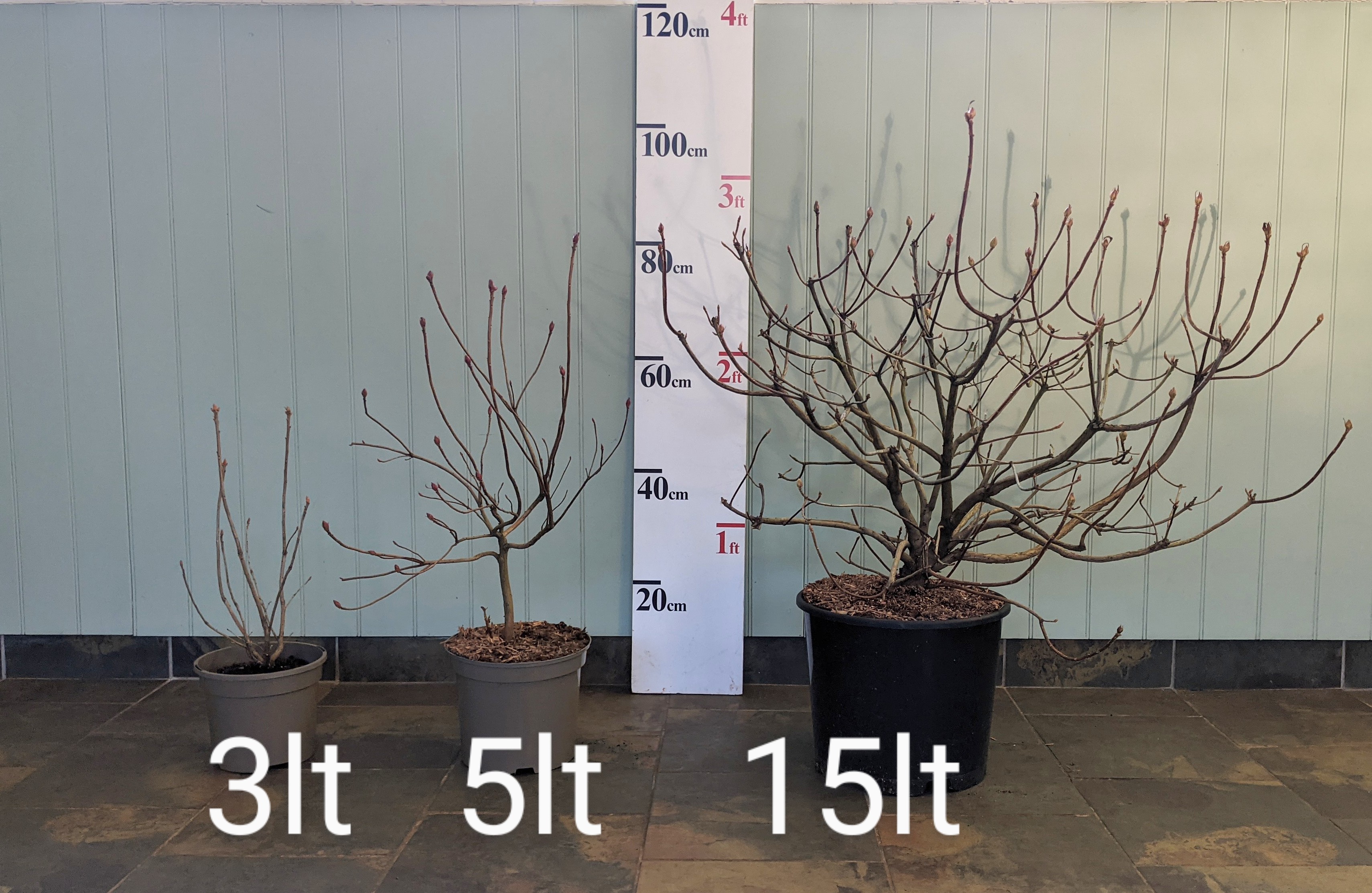
picture for example only
The Basics
Ideal soil
Acidic soil, good organic content, pH 4.5-6.0. Inkarho range of rhododendrons will tolerate soils up to pH7.5
Sun or Shade
Light dappled shade is best for most varieties.
Shelter
Refer to hardiness rating. Give young plants protection.
Site Selection
Avoid close to trees, roots, invasive weeds, walls, hot patios, dry banks and waterlogged soils. Do not use weed matting or stone mulch.
Plant spacing
Use the height shown in 10 years as a guide to the distance between each plant. Allow room for plant to fill out. If planting closer for instant impact, be prepared to move plants after a few years.
Compost
- 3 litre pot, dig in 10-20 litres of ericaceous compost.
- 7.5 litre pot, dig in 20-30 litres of ericaceous compost.
- 70-80cm specimen, dig in 60 litres of ericaceous compost.
- 100-120cm specimen, dig in 120 litres of ericaceous compost.
Planting depth
Plant high in the ground, with the top of the rootball visible.
Feeding
Slow-release ericaceous feed recommended in March and straight after flowering.
Mulch
Recommended every few years.
Water
The key ingredient! Keep moist all season, especially the critical time at end of June for flower bud initiation. Tap water is better than no water. Heavy dose at least once per week in dry weather.
Drainage
Ensure good drainage in winter, especially with yellow flowering varieties. Avoid waterlogged sites.
Pruning
Rhododendrons and Camellias: Not normally required. Tidy wayward shoots after flowering.
Evergreen azaleas and Bloombux can be clipped into a low hedge.
Magnolias and Acers: Formative pruning when young to shape into a tree or bush.
Deadheading
Remove old flower-heads, particularly on young or weak plants.
For further advice see here
Delivery & Returns
Our website calculates the delivery charge according to weight and delivery location throughout the UK. To see these charges, please enter your postcode at the checkout, and you will see the charge vary as you add more items to your wheelbarrow.
 Millais Nurseries
Millais Nurseries



